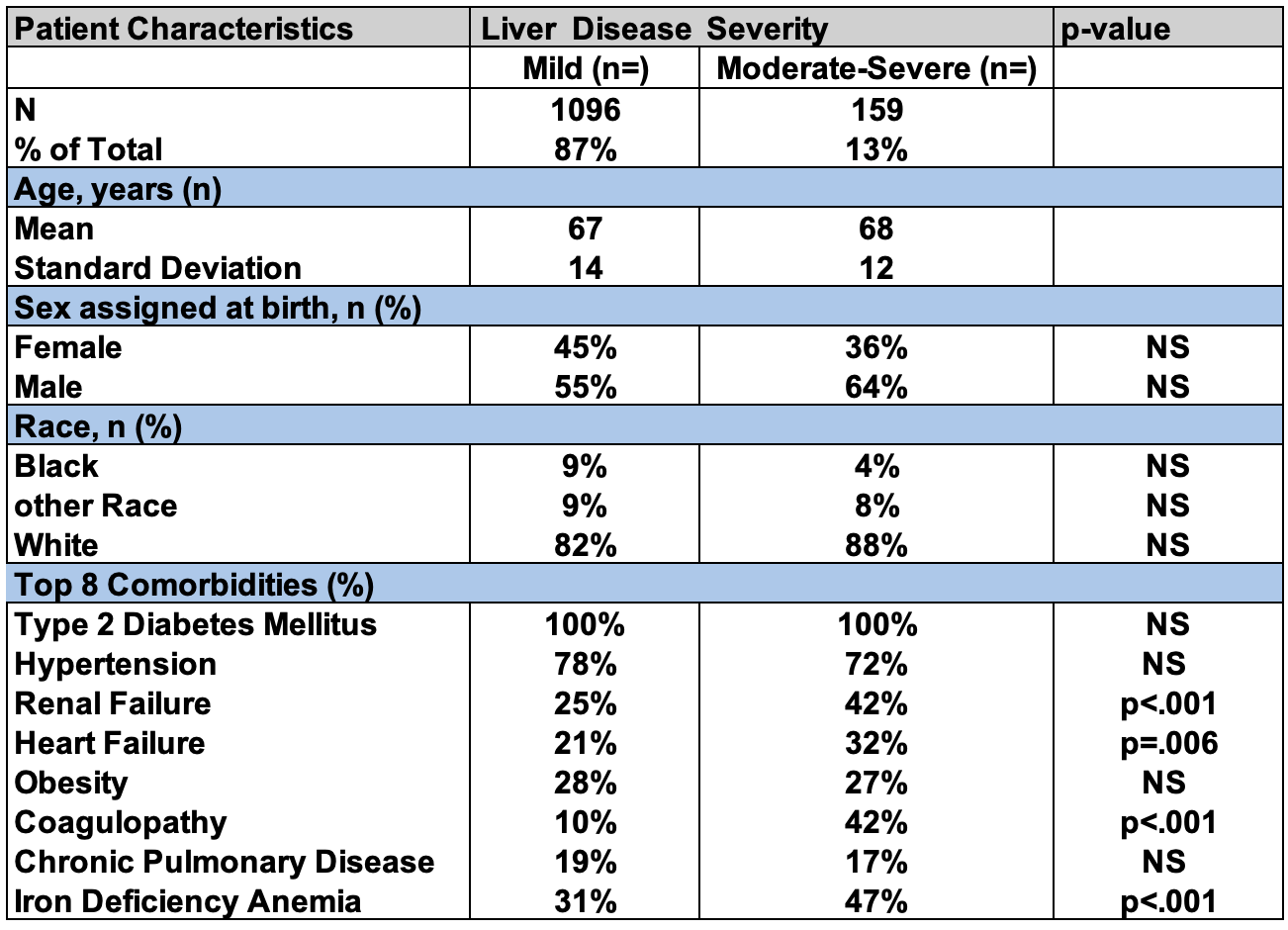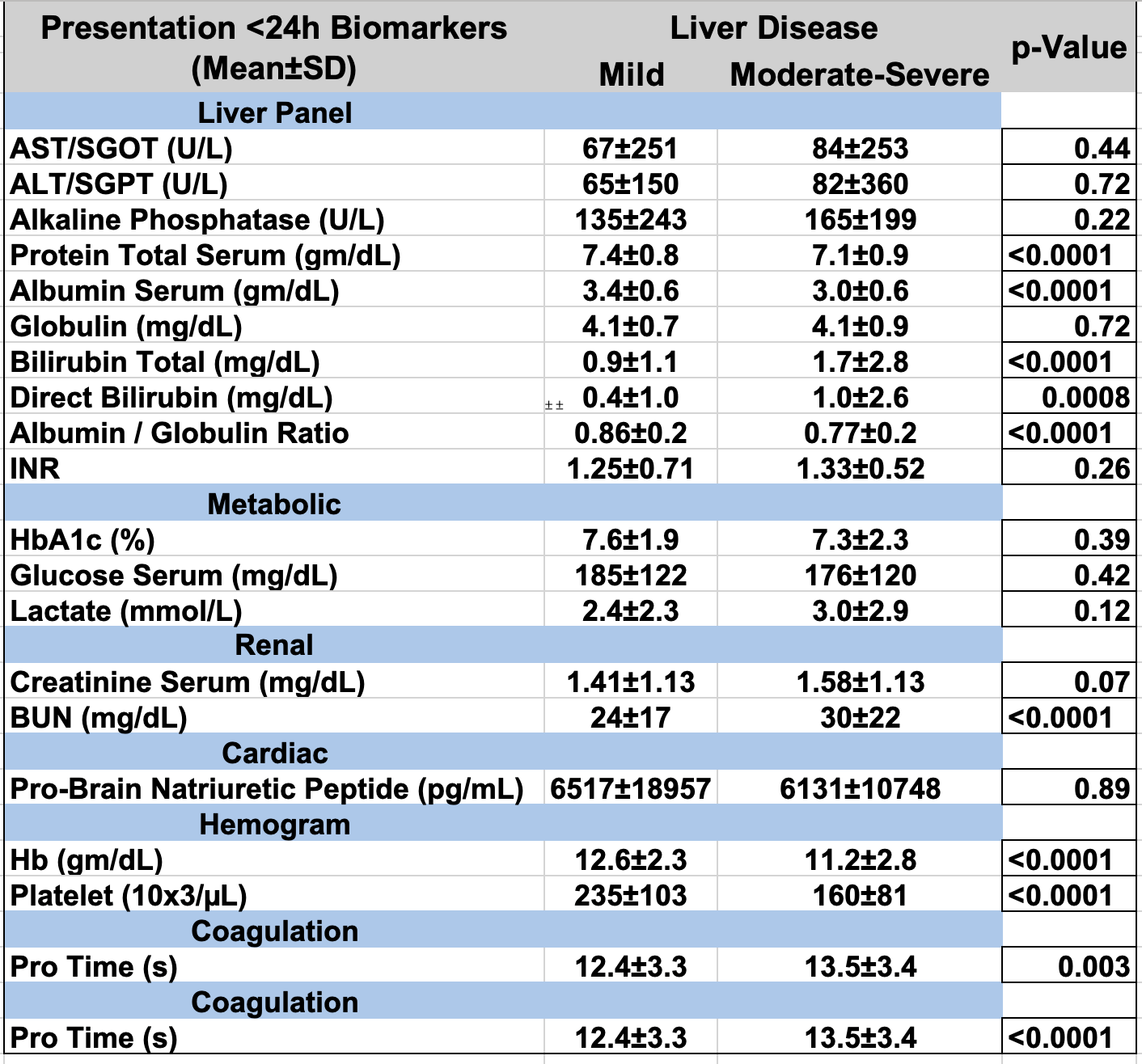Monday Poster Session
Category: Liver
P3649 - FIB-4 Index as a Predictor of Liver Disease Incidence and Progression in Type 2 Diabetes Mellitus Patients: A Learning Health System Landscape Analysis
Monday, October 27, 2025
10:30 AM - 4:00 PM PDT
Location: Exhibit Hall

Rumit Mistry, DO (he/him/his)
Florida State University College of Medicine/ Sarasota Memorial Hospital, FL
Presenting Author(s)
Rumit Mistry, DO, Matthew Miller, DO, Karen Hamad, MD
Florida State University College of Medicine/ Sarasota Memorial Hospital, Sarasota, FL
Introduction: Non-alcoholic fatty liver disease (NAFLD) is a prevalent comorbidity in type 2 diabetes mellitus (DM2) patients, with incidence rates between 10% and 70%. Progression of NAFLD can lead to severe complications like cirrhosis and hepatocellular carcinoma. The Fibrosis-4 Index (FIB-4) is a valuable tool for assessing liver fibrosis, with scores < 1.3 generally indicating low risk and scores > 2.67 (or > 3.25) suggesting high risk of significant fibrosis. Intermediate scores warrant further investigation. While useful, the FIB-4's accuracy in predicting acute decompensation is limited, partly due to its inability to fully capture complex comorbidities.
Methods: This IRB exempted retrospective observational study evaluated the effectiveness of the FIB-4 score in identifying liver disease incidence and progression in DM2 patients. Data from 1096 patients with mild liver disease and 159 with moderate-severe liver disease (identified using Elixhauser Comorbidity Index v2024.1) was collected between October 2019 and December 2024. Continuous data summarized with mean (SD) were compared using independent t-test. Discrete data summarized as proportions were compared with chi-square test. A two-tailed p < .05 was considered statistically significant.
Results: Patients exhibited similar demographics while expressing differential patterns of comorbidity across liver severity including higher prevalence of renal failure, heart failure, coagulopathy, and iron deficiency anemia in the moderate-severe group (Table 1). The mean FIB-4 index was significantly higher in patients with moderate-severe liver disease compared to those with mild disease, aligning with previous research on its utility in predicting liver-related outcomes (Table 2).
Discussion: Our findings confirm the FIB-4 index as a valuable tool for assessing liver disease risk and progression in DM2 patients, effectively discriminating between severity stages. The observed higher FIB-4 scores and distinct laboratory and comorbidity patterns in moderate-severe liver disease underscore the clinical relevance of this marker for early identification and risk stratification in DM2 patients. Study limitations include its retrospective nature and reliance on ICD codes, which may introduce bias or errors. Despite these, the study provides proof of principle for the FIB-4 index in characterizing liver disease progression risk in DM2.

Figure: Table 1: Demographics and Comorbidities

Figure: Table 2: Biomarkers across Liver Disease severity
Disclosures:
Rumit Mistry indicated no relevant financial relationships.
Matthew Miller indicated no relevant financial relationships.
Karen Hamad indicated no relevant financial relationships.
Rumit Mistry, DO, Matthew Miller, DO, Karen Hamad, MD. P3649 - FIB-4 Index as a Predictor of Liver Disease Incidence and Progression in Type 2 Diabetes Mellitus Patients: A Learning Health System Landscape Analysis, ACG 2025 Annual Scientific Meeting Abstracts. Phoenix, AZ: American College of Gastroenterology.
Florida State University College of Medicine/ Sarasota Memorial Hospital, Sarasota, FL
Introduction: Non-alcoholic fatty liver disease (NAFLD) is a prevalent comorbidity in type 2 diabetes mellitus (DM2) patients, with incidence rates between 10% and 70%. Progression of NAFLD can lead to severe complications like cirrhosis and hepatocellular carcinoma. The Fibrosis-4 Index (FIB-4) is a valuable tool for assessing liver fibrosis, with scores < 1.3 generally indicating low risk and scores > 2.67 (or > 3.25) suggesting high risk of significant fibrosis. Intermediate scores warrant further investigation. While useful, the FIB-4's accuracy in predicting acute decompensation is limited, partly due to its inability to fully capture complex comorbidities.
Methods: This IRB exempted retrospective observational study evaluated the effectiveness of the FIB-4 score in identifying liver disease incidence and progression in DM2 patients. Data from 1096 patients with mild liver disease and 159 with moderate-severe liver disease (identified using Elixhauser Comorbidity Index v2024.1) was collected between October 2019 and December 2024. Continuous data summarized with mean (SD) were compared using independent t-test. Discrete data summarized as proportions were compared with chi-square test. A two-tailed p < .05 was considered statistically significant.
Results: Patients exhibited similar demographics while expressing differential patterns of comorbidity across liver severity including higher prevalence of renal failure, heart failure, coagulopathy, and iron deficiency anemia in the moderate-severe group (Table 1). The mean FIB-4 index was significantly higher in patients with moderate-severe liver disease compared to those with mild disease, aligning with previous research on its utility in predicting liver-related outcomes (Table 2).
Discussion: Our findings confirm the FIB-4 index as a valuable tool for assessing liver disease risk and progression in DM2 patients, effectively discriminating between severity stages. The observed higher FIB-4 scores and distinct laboratory and comorbidity patterns in moderate-severe liver disease underscore the clinical relevance of this marker for early identification and risk stratification in DM2 patients. Study limitations include its retrospective nature and reliance on ICD codes, which may introduce bias or errors. Despite these, the study provides proof of principle for the FIB-4 index in characterizing liver disease progression risk in DM2.

Figure: Table 1: Demographics and Comorbidities

Figure: Table 2: Biomarkers across Liver Disease severity
Disclosures:
Rumit Mistry indicated no relevant financial relationships.
Matthew Miller indicated no relevant financial relationships.
Karen Hamad indicated no relevant financial relationships.
Rumit Mistry, DO, Matthew Miller, DO, Karen Hamad, MD. P3649 - FIB-4 Index as a Predictor of Liver Disease Incidence and Progression in Type 2 Diabetes Mellitus Patients: A Learning Health System Landscape Analysis, ACG 2025 Annual Scientific Meeting Abstracts. Phoenix, AZ: American College of Gastroenterology.
